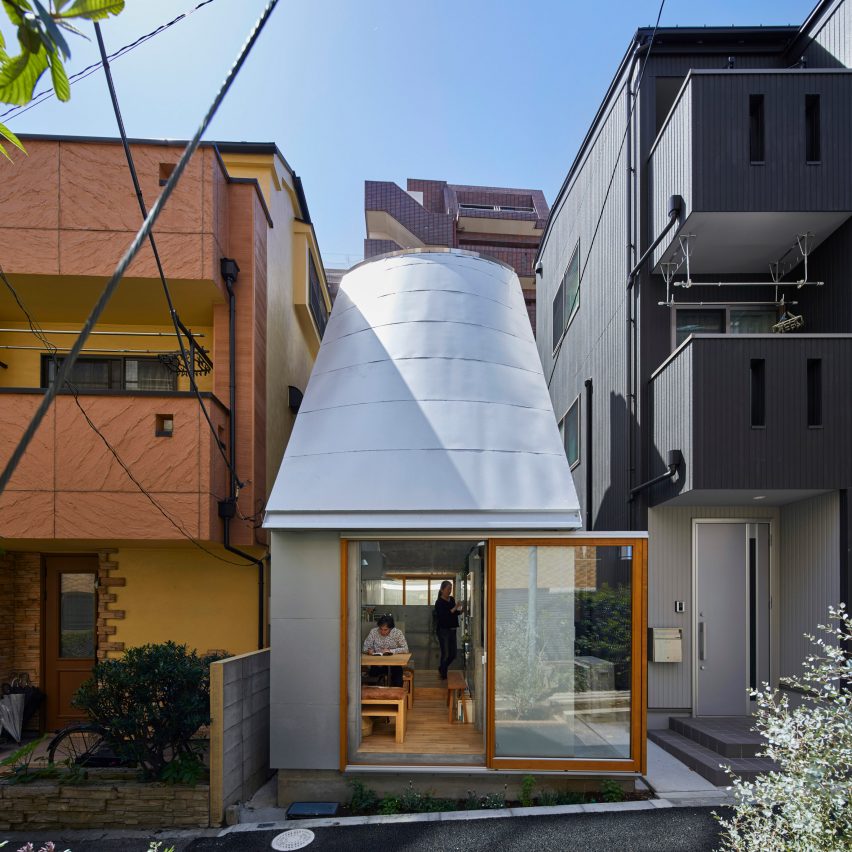
Stacked volumes and space-saving floor plans feature in this roundup of 10 tiny houses around the world, from an Australian mobile cabin on wheels to a micro home in Tokyo with a pair of funnelled roofs.
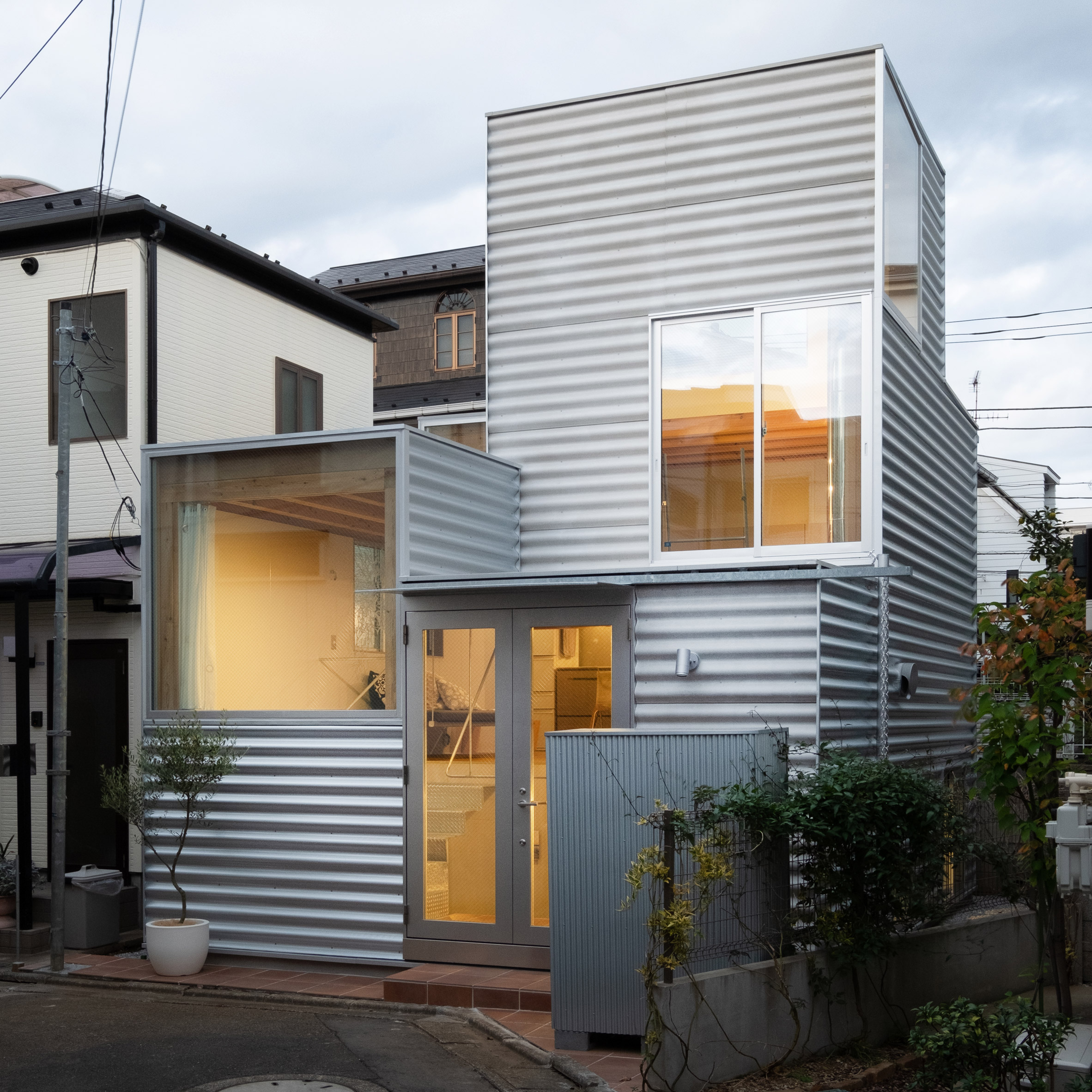
House Tokyo, Japan, by Unemori Architects
Japanese studio Unemori Architects built this corrugated steel-clad house comprising several stacked boxes on a 26-square-metre plot of land in densely populated Tokyo.
"You have to be experimental and clever with regards to its utmost usage and we looked towards how diverse and extendable the space could be within the tiny plot," said the studio.
Find out more about House Tokyo ›
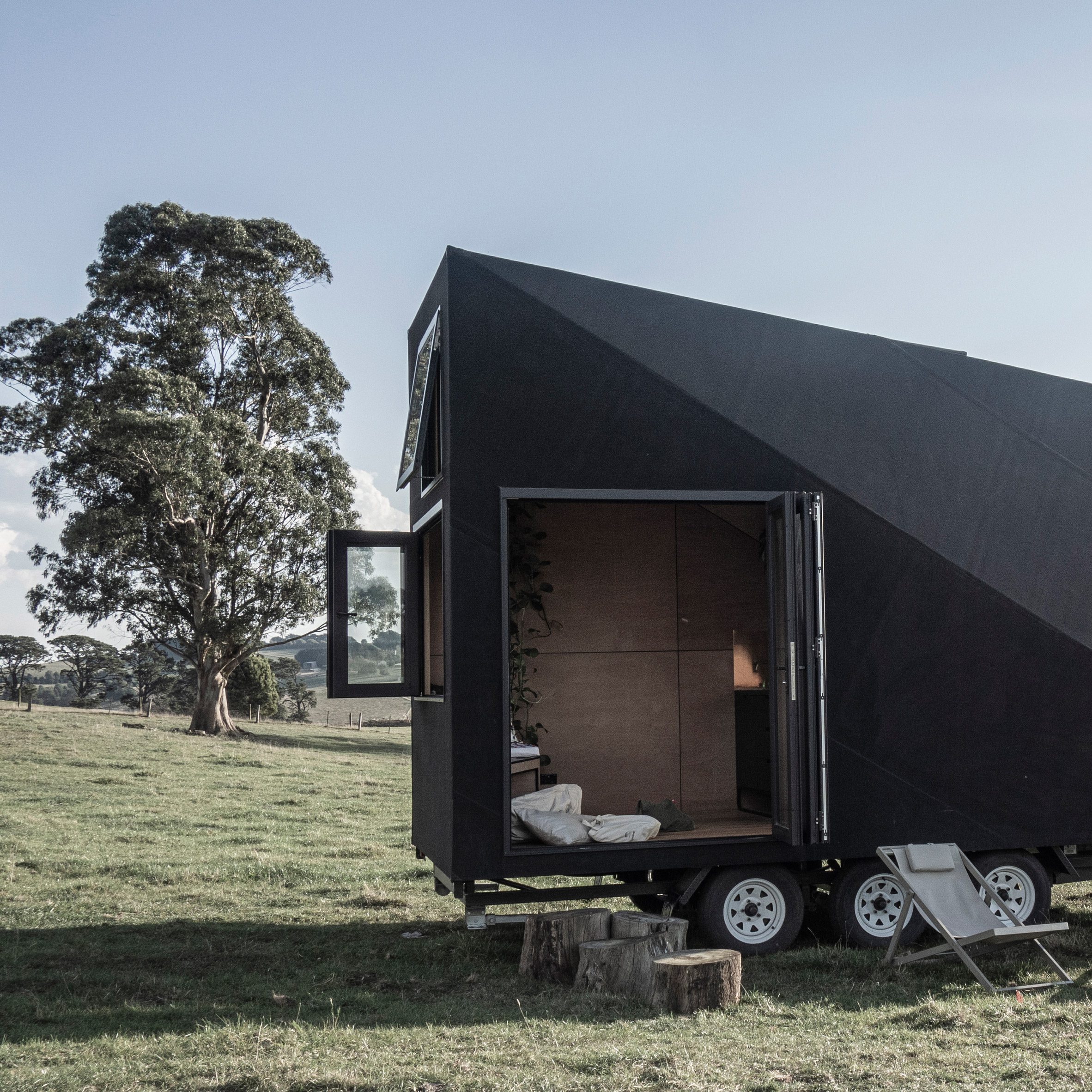
Base Cabin, Australia, by Studio Edwards
Base Cabin is a geometric micro home that features a sleek rubber skin and is mobile thanks to a set of wheels on which it can roll.
Melbourne-based Studio Edwards took cues from the recognisable A-frame hut for the cabin's design, which was created in this shape for its structural efficiency as well as to give a neat and compact appearance.
Find out more about Base Cabin ›
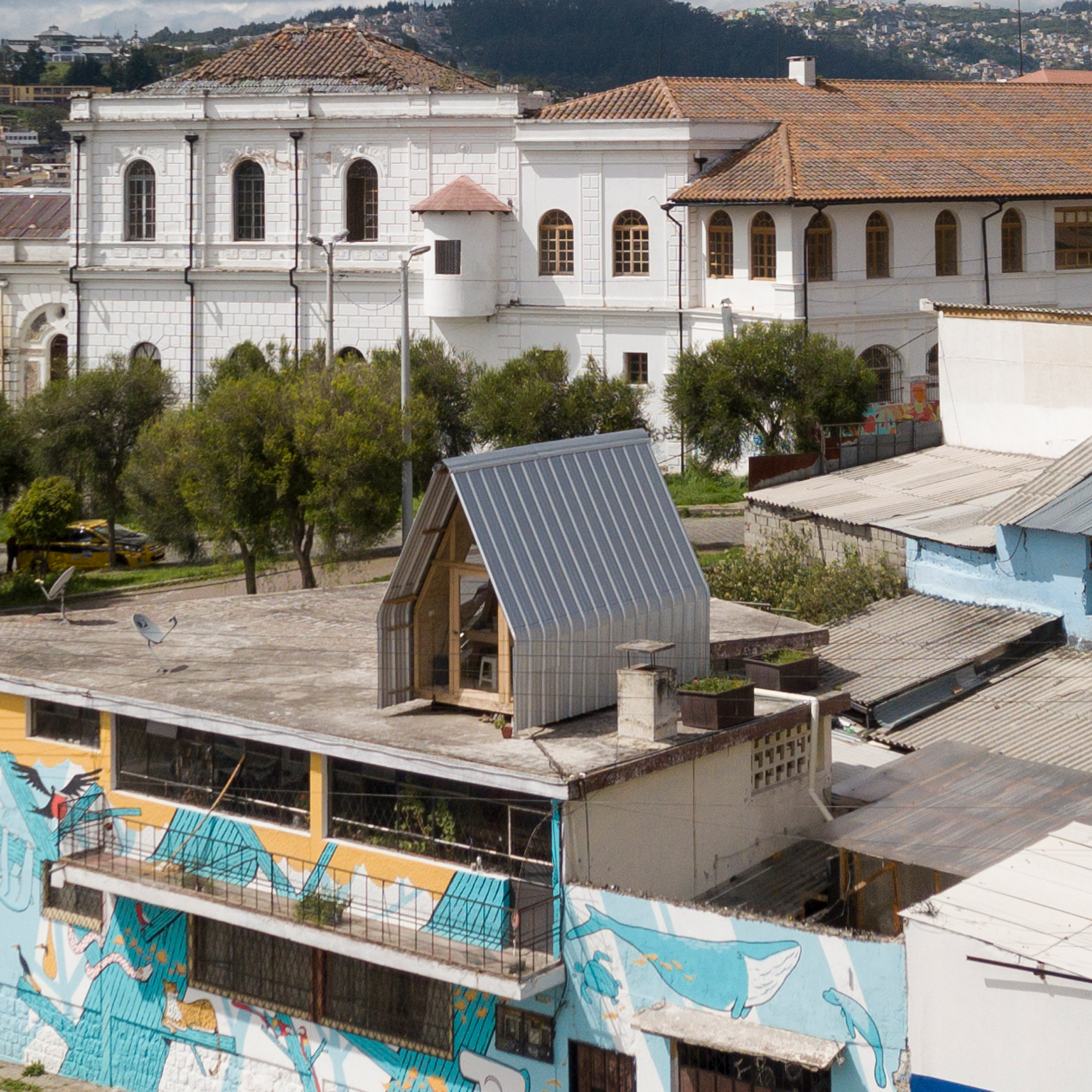
Casa Parásito, Ecuador, by El Sindicato
With a floor plan of only 12 square metres, Casa Parásito is a tiny parasitic home that sits atop an urban building in Quito, on which it relies for support and services.
Architecture office El Sindicato attached the dwelling to the existing building with steel foundations and included a bathroom, kitchen, bed and living space in the design, as well as save-spacing storage areas.
Like Base Cabin, Casa Parásito is formed from an A-frame timber structure that aims to make the most of limited interior space.
Find out more about Casa Parásito ›
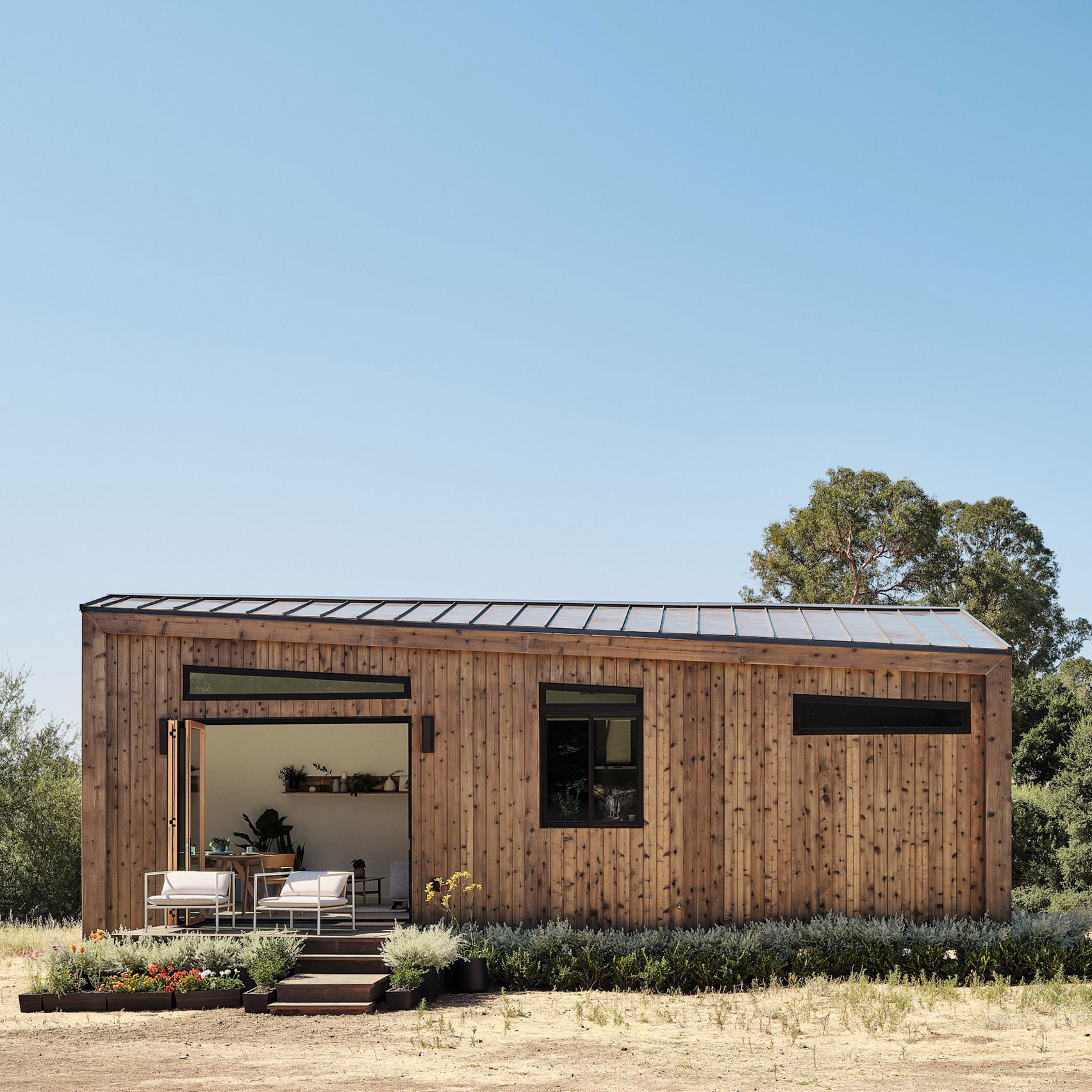
Koto x Abodu, USA, by Koto and Abodu
British studio Koto and American homebuilder Abodu created their eponymous collection of identical prefabricated Accessory Dwelling Units (ADUs) for sites in San Jose, California.
With a limited width of 4.26 metres, the Koto x Abodu model is designed to be easily transported and features various save-spacing elements – from storage under the home's only bed, to a built-in bench in the living room and a petite galley kitchen.
Find out more about Koto x Abodu ›
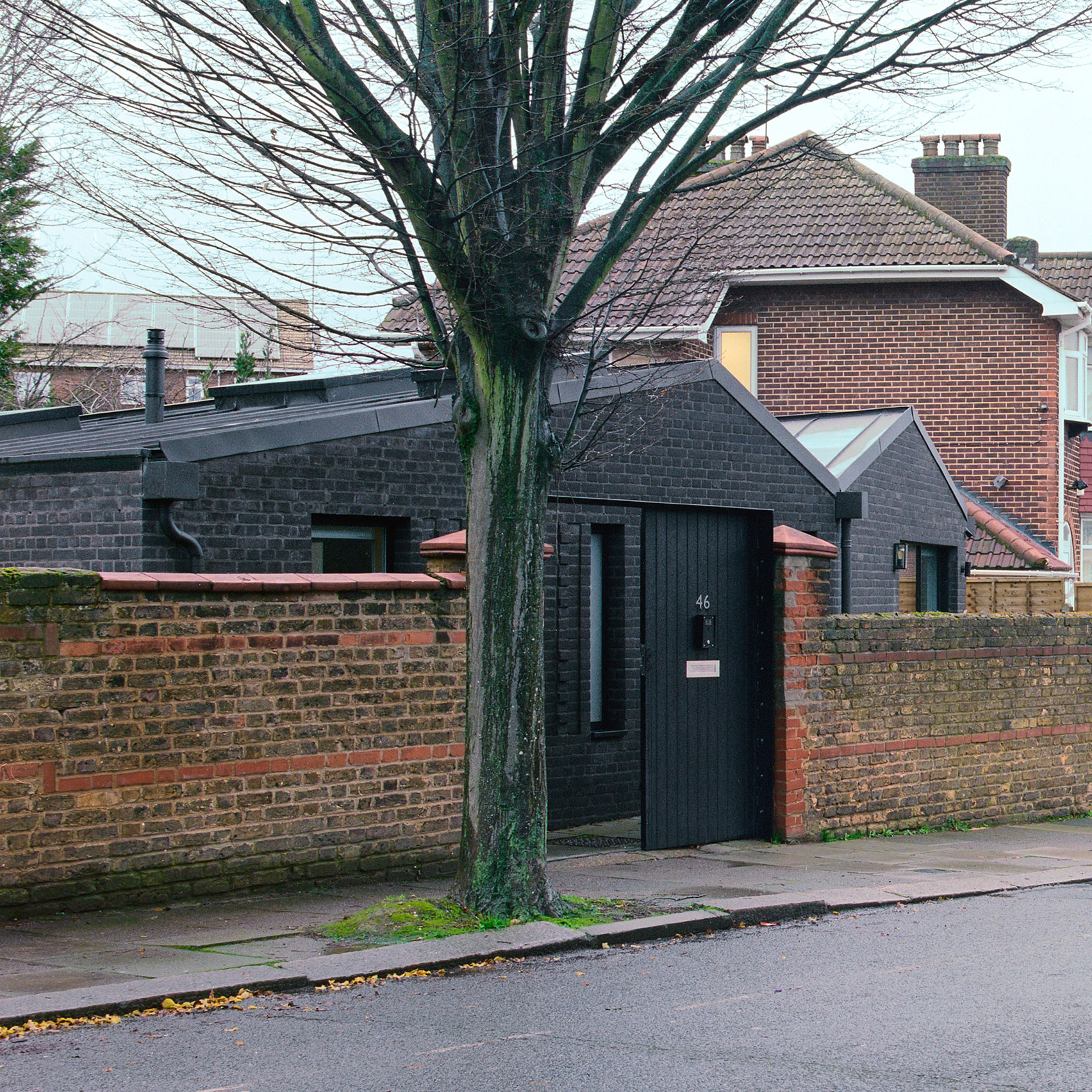
Jupp House, UK, by Phillips Tracey Architects
One-storey Jupp House was designed to replace an old garage and shed on a plot of land at the end of a suburban garden in Acton, London.
Local firm Phillips Tracey Architects clad the house in dark brick and grey zinc. Internal floor space of just 66 metres is made up of two connected wings that display an irregularly angled roofline.
Find out more about Jupp House ›
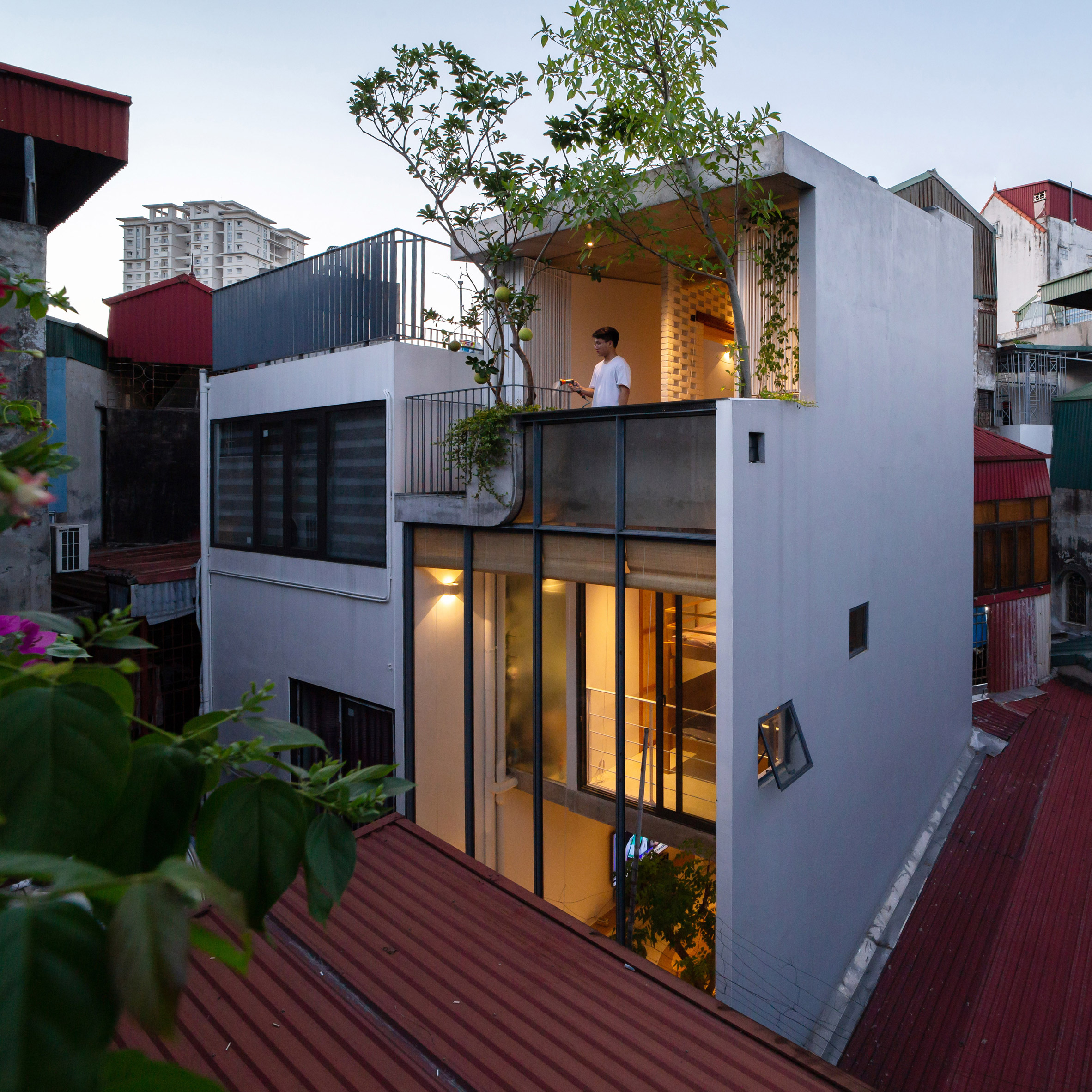
TH House, Vietnam, by ODDO Architects
Crowned emerging architecture studio of the year at the 2021 Dezeen Awards, Vietnamese practice ODDO Architects stacked five storeys onto a backland plot to create TH House, a family home in Hanoi.
Despite its only four-metre-wide and six-metre-deep site, the house is designed to feel bright and airy through the addition of lightwells and perforated walls that open out its interior spaces.
Find out more about TH House ›
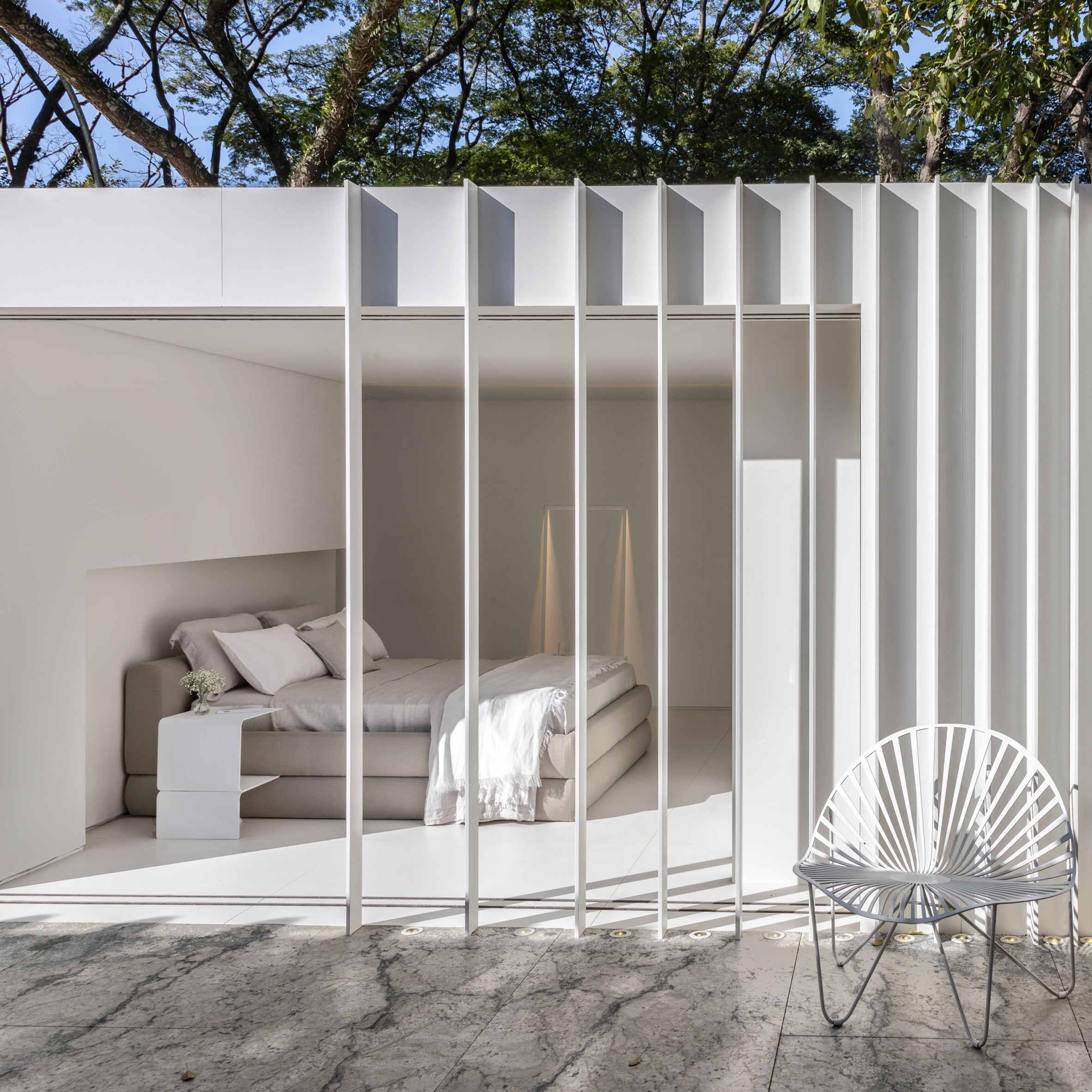
Casa Container, Brazil, by Marilia Pellegrini
Brazilian architect Marilia Pellegrini demonstrated the potential of reusing shipping containers by designing a micro show-home inside a pair and decorating the interiors with minimalist Nendo furniture.
Created in São Paulo, the repurposed Casa Container is comprised of two 12-metre long containers that have been covered in sleek white Dekton, highlighting how industrial objects can be disguised and transformed to create luxury housing.
Find out more about Casa Container ›
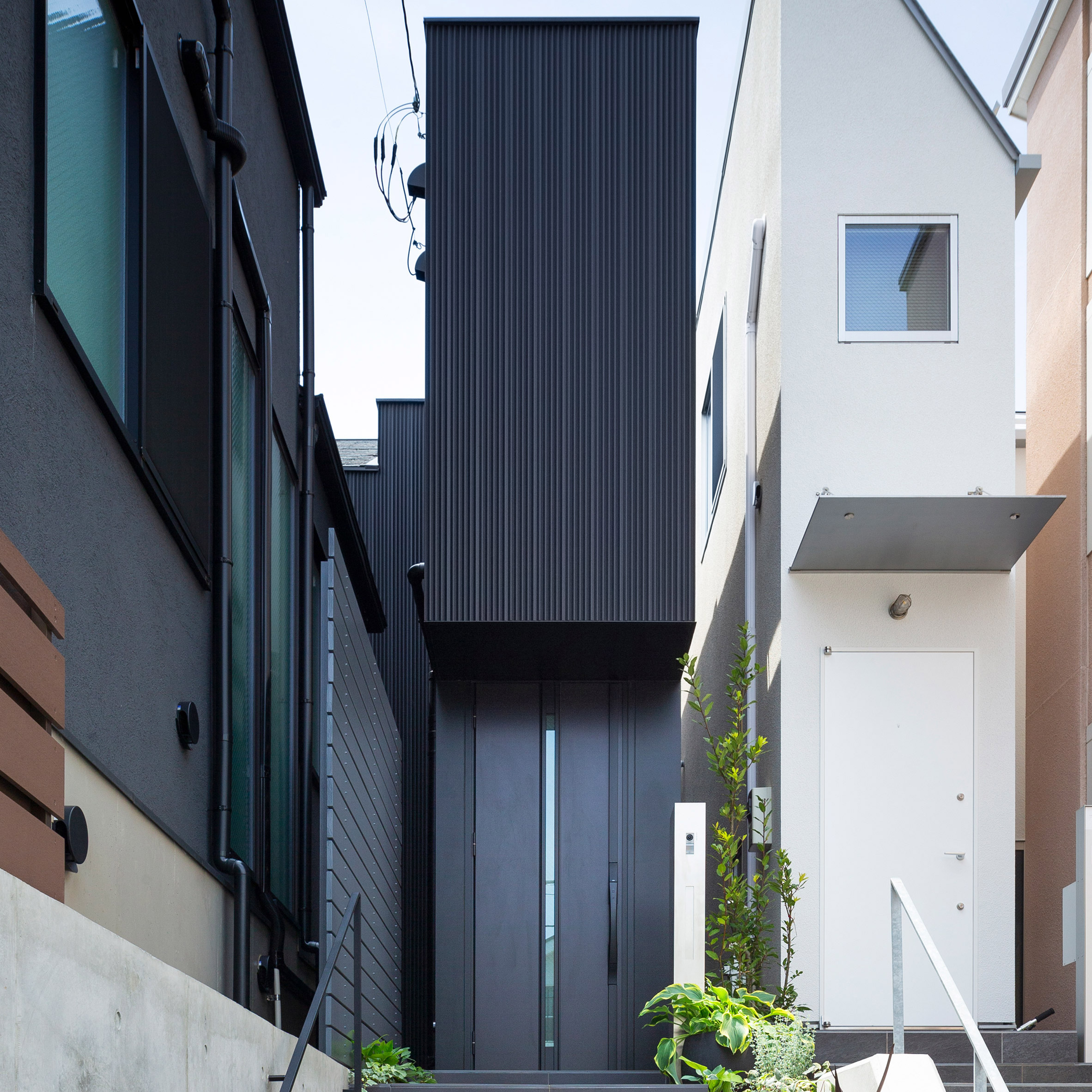
Jewel, Japan, by Apollo Architects and Associates
A skinny, L-shaped structure defines Jewel by Apollo Architects and Associates, a black steel-clad home in Tokyo that is just 1.4-metres-wide on its smallest side.
Building with a crowded site in mind is a common approach to contemporary urban Japanese houses, due to finite and expensive land. For this project, the architecture firm was especially limited by the "flagpole" nature of the plot – square with a narrow approach in a heavily populated neighbourhood.
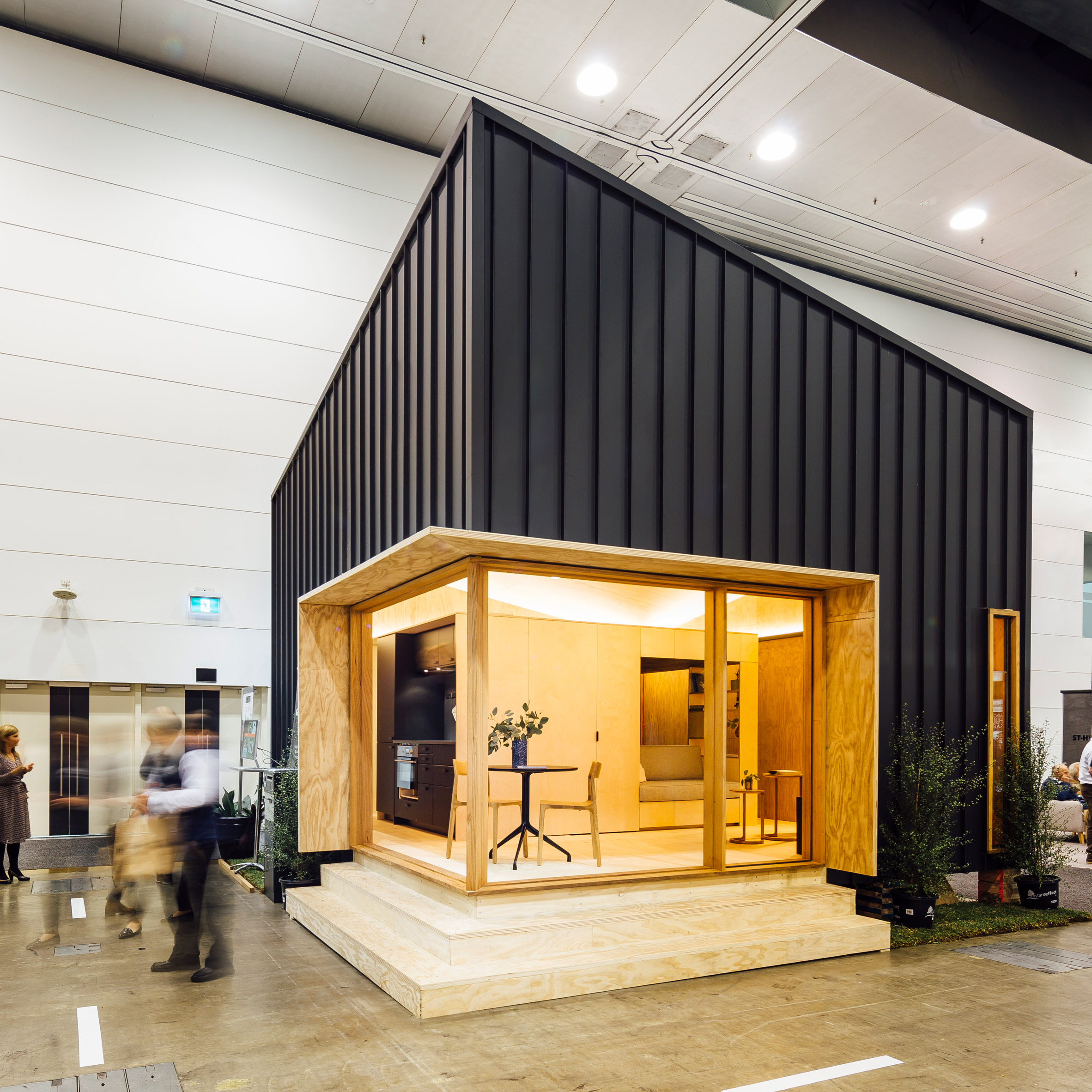
The Peak, Australia, by Grimshaw Architects
Prompted by the desire to provide affordable housing for young people in urban parts of Australia, Grimshaw Architects designed a set of 35-square-metre micro homes for Kids Under Cover, a charity that supports the country's homeless youth.
Called The Peak, the non-profit prefabricated homes are especially created to accommodate affordable IKEA furniture and have high ceilings in order to give occupants a greater sense of space inside.
Find out more about The Peak ›
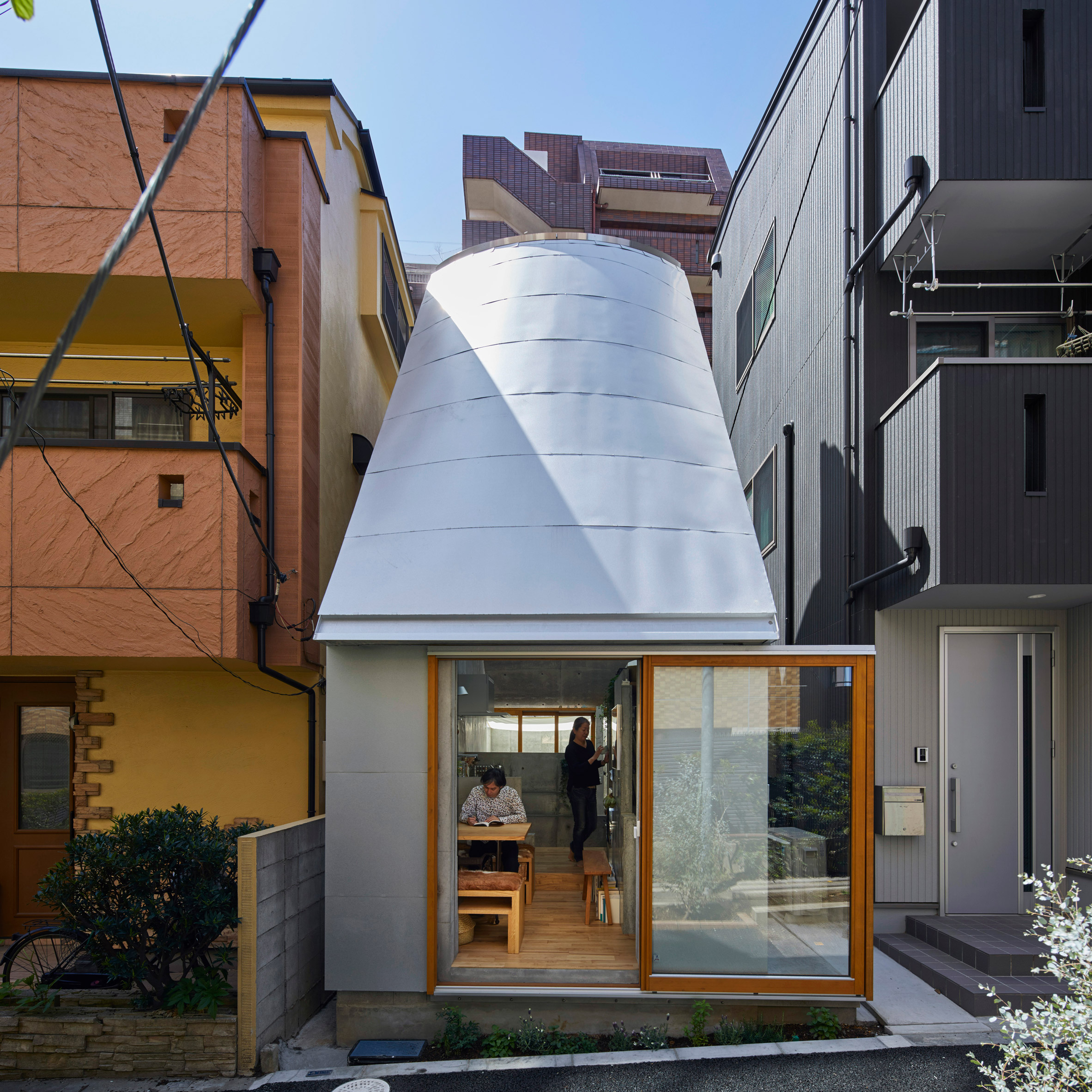
Love2 House, Japan, by Takeshi Hosaka
Architect Takeshi Hosaka built a tiny Tokyo house for himself and his wife that features a pair of funnel-like roofs that tops a total floor area of only 19 square metres.
The height of Love2 House's slanted ceilings opens out its compact interior, which features a dining table located in close proximity to the street, while skylights and a floor-to-ceiling sliding door connect indoor and outdoor spaces.
The post Ten tiny houses that make the most of their compact plots appeared first on Dezeen.
from Dezeen https://ift.tt/3HdxaWu
No comments:
Post a Comment